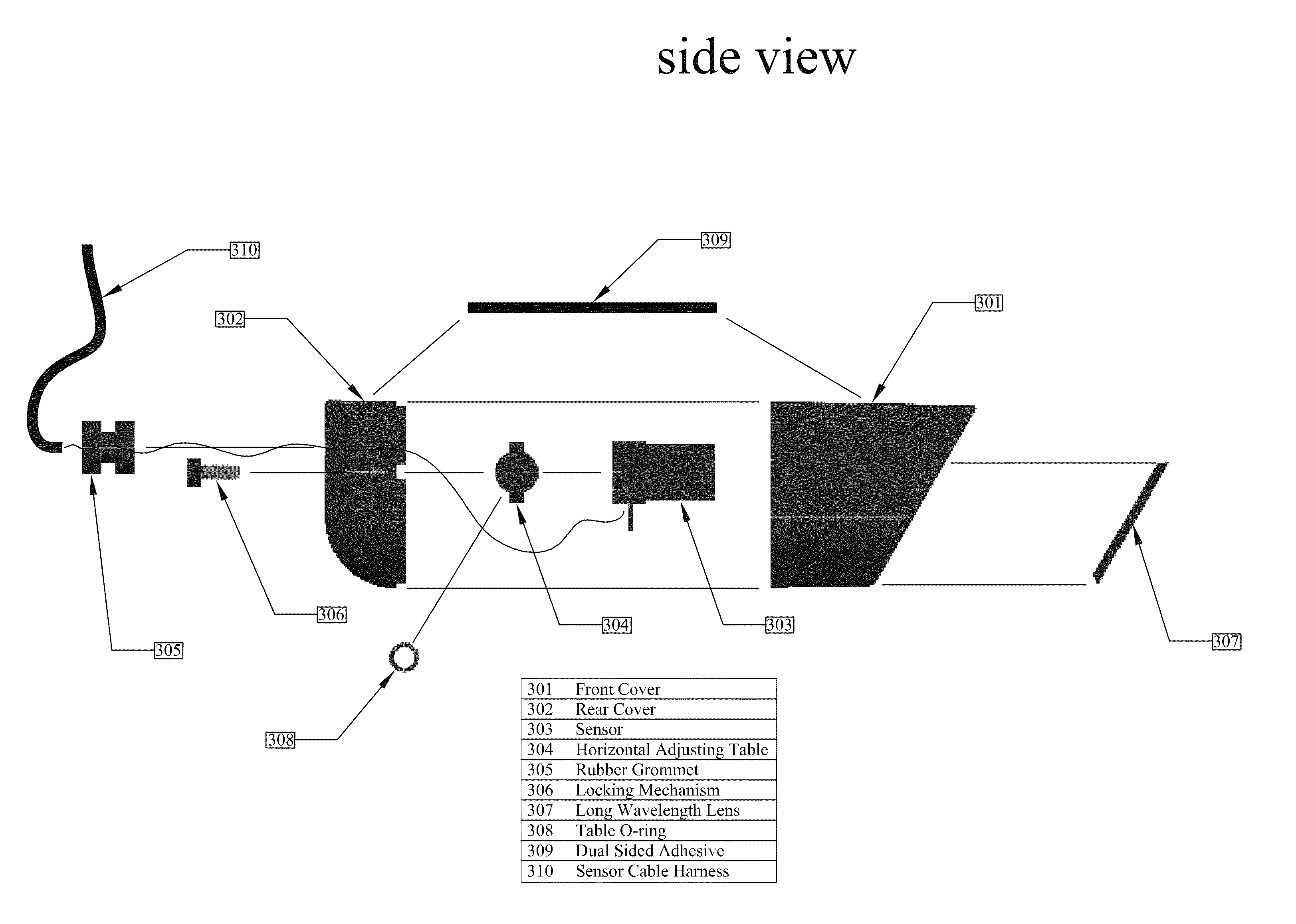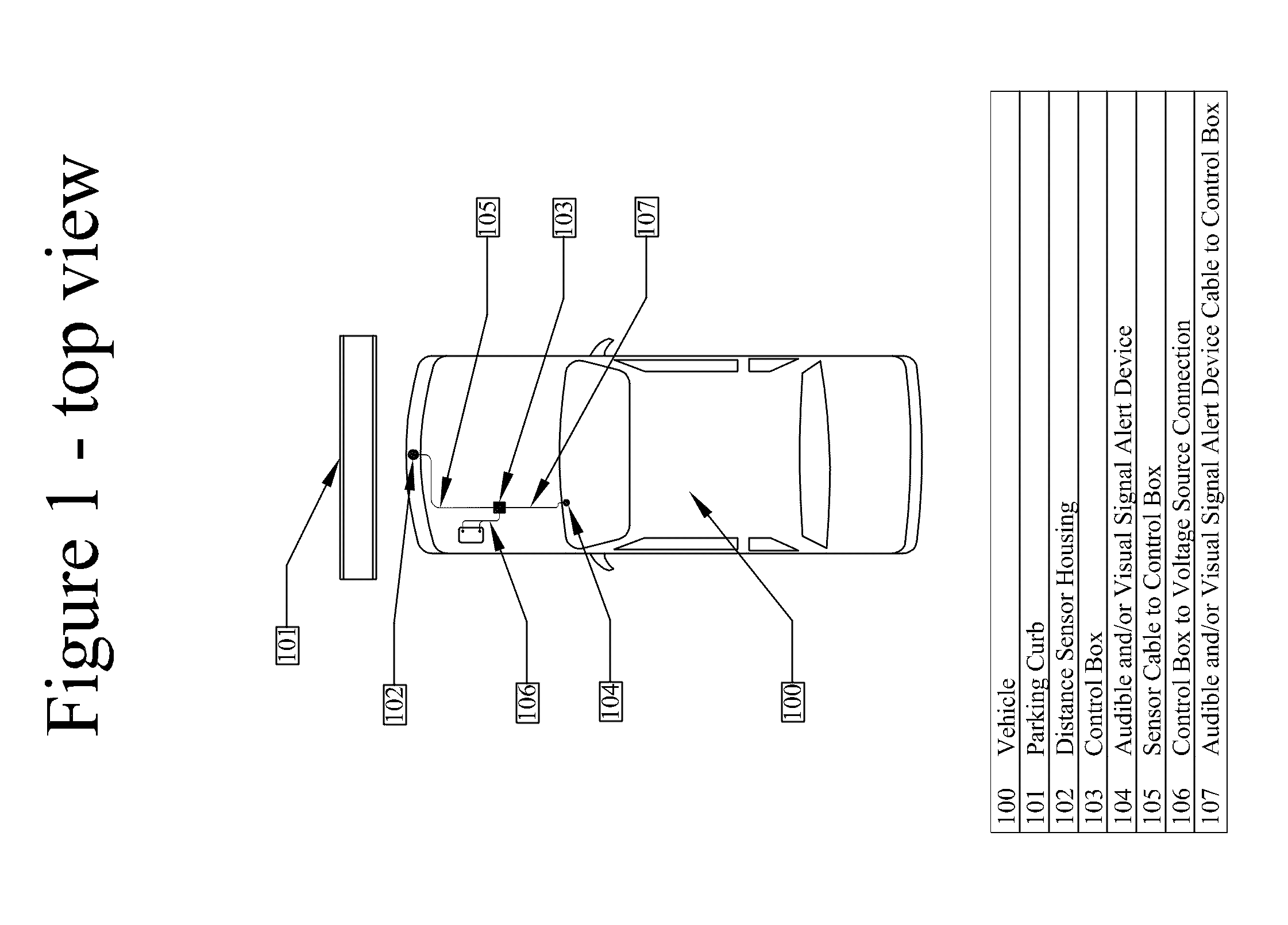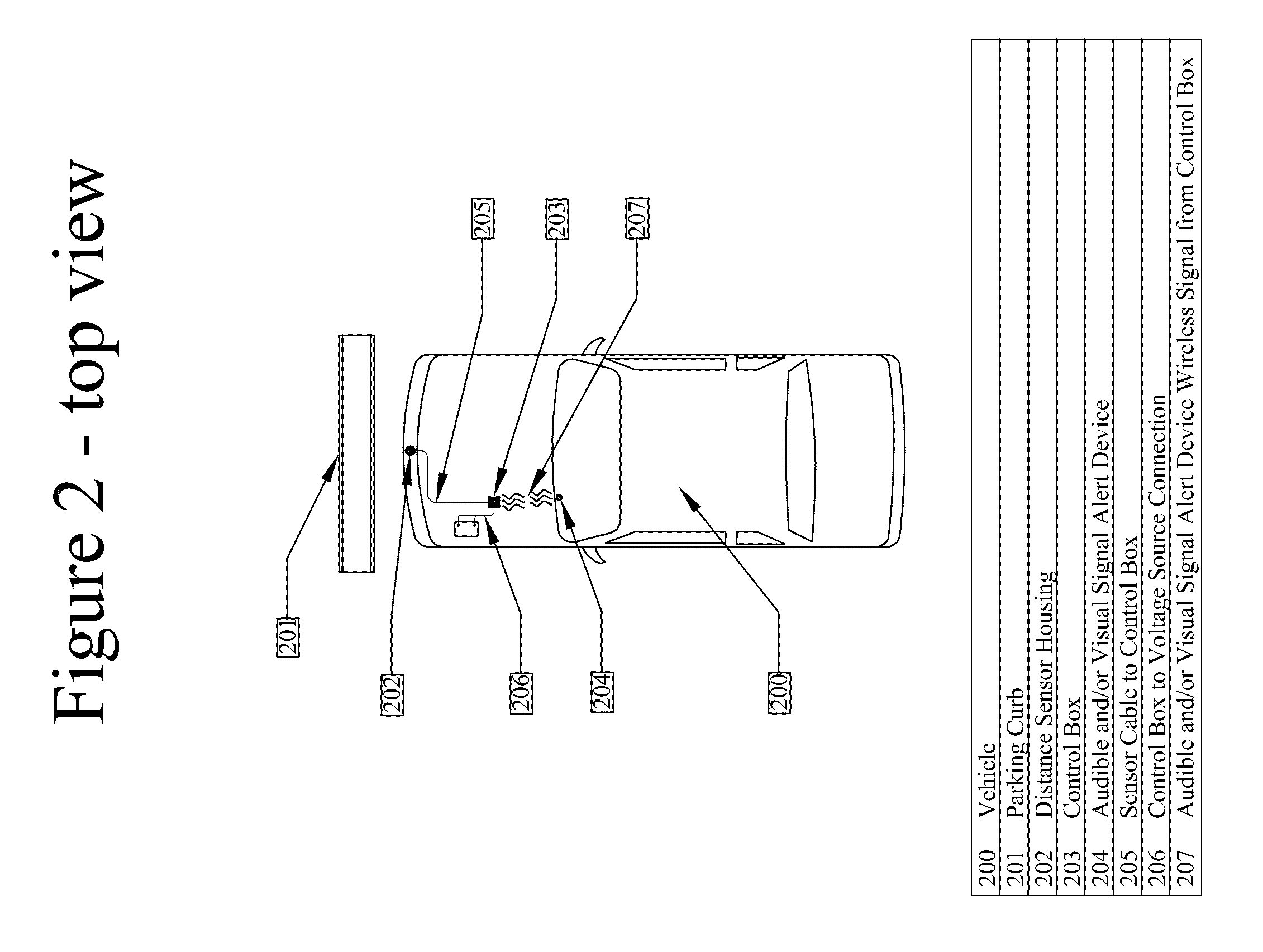Curb detection device for motor vehicles
a detection device and motor vehicle technology, applied in electric/magnetic computing, analogue processes for specific applications, instruments, etc., can solve the problems of preventing motor vehicle damage from high curbs, few prior art devices have been commercialized, and high number of motor vehicle drivers experience front air spoiler or front bumper damage, etc., to reduce false alarms, easy installation, and convenient use
- Summary
- Abstract
- Description
- Claims
- Application Information
AI Technical Summary
Benefits of technology
Problems solved by technology
Method used
Image
Examples
Embodiment Construction
[0040]Referring now to the drawings wherein the showings are for purposes of illustrating a preferred embodiment of the invention only and not for purposes of limiting same;
[0041]FIG. 1, as a preferred embodiment of this invention, shows the vehicle, 100, parked at a pre-determined distance from a parking curb, 101. The distance sensor housing, 102, is shown attached to the vehicle centered under the front bumper area to provide an inconspicuous mounting location. A control box, 103, which contains the electronics, circuit board, microprocessor, and necessary electronic filters to control the curb detection device, is shown under the vehicle hood. A sensor cable, 105, is shown routed from the sensor housing, 102 to the control box, 103. The control box, 103, is shown electrically connected to a battery voltage source, 106, which must supply greater than about 13.4 volts dc, which is about the dc voltage produced by the output of the vehicle alternator, to activate the curb detection...
PUM
 Login to View More
Login to View More Abstract
Description
Claims
Application Information
 Login to View More
Login to View More - R&D
- Intellectual Property
- Life Sciences
- Materials
- Tech Scout
- Unparalleled Data Quality
- Higher Quality Content
- 60% Fewer Hallucinations
Browse by: Latest US Patents, China's latest patents, Technical Efficacy Thesaurus, Application Domain, Technology Topic, Popular Technical Reports.
© 2025 PatSnap. All rights reserved.Legal|Privacy policy|Modern Slavery Act Transparency Statement|Sitemap|About US| Contact US: help@patsnap.com



